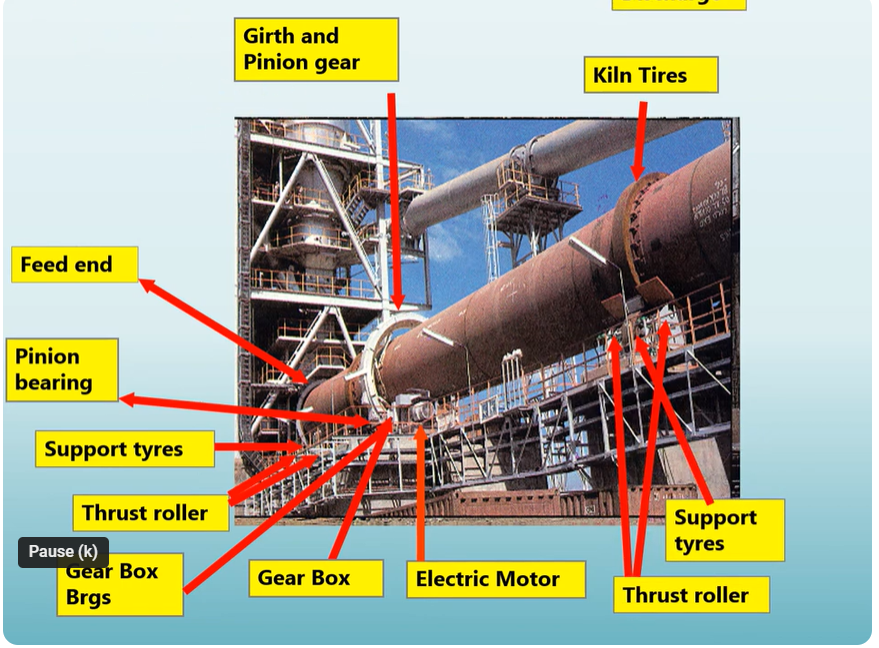Contents
Comprehensive Guide to Lubrication in the Cement Industry

TO Download this post and all the books and excel sheets and my personal notes and presentations I collected bout cement industry click the below paypal link
Comprehensive Guide to Lubrication in the Cement Industry
Lubrication is a critical aspect of maintenance in the cement industry, ensuring that machinery operates smoothly, efficiently, and with minimal downtime. This comprehensive guide explores the importance of lubrication, modern tools and techniques, examples of lubricants, and cost control measures. We will also highlight SKF lubricants, including specific part numbers.
Table of Contents
- Importance of Lubrication in the Cement Industry
- Modern Tools for Lubrication
- Types of Lubricants Used in Cement Plants
- SKF Lubricants and Part Numbers
- Cost Control in Lubrication Management
- Conclusion
1. Importance of Lubrication in the Cement Industry
Proper lubrication is essential for the optimal performance and longevity of machinery in cement plants. It reduces friction, wear, and heat generation, ensuring that components such as bearings, gears, and chains operate efficiently. In a demanding environment like a cement plant, where machinery is subject to heavy loads and harsh conditions, effective lubrication minimizes the risk of equipment failure and unplanned downtime.
Benefits of Effective Lubrication
- Increased Equipment Lifespan: Reduces wear and tear on components.
- Enhanced Efficiency: Lower friction results in smoother operation.
- Reduced Downtime: Prevents equipment failures and unplanned maintenance.
- Energy Savings: Less friction means lower energy consumption.
- Improved Safety: Reduces the risk of equipment malfunction that could lead to accidents.
2. Modern Tools for Lubrication
Advancements in lubrication technology have introduced several modern tools that enhance the effectiveness and efficiency of lubrication processes in the cement industry.
Lubrication Systems
- Automatic Lubrication Systems: These systems automatically apply the right amount of lubricant at the right intervals, ensuring consistent lubrication without manual intervention.
- Centralized Lubrication Systems: Allow for the simultaneous lubrication of multiple points from a central location, saving time and ensuring uniform distribution.
Monitoring and Analysis Tools
- Lubrication Management Software: Tracks lubrication schedules, inventory, and maintenance activities.
- Condition Monitoring Tools: Analyze lubricant properties and machinery conditions to predict when lubrication is needed.
Application Tools
- Grease Guns: For manual lubrication of specific points.
- Spray Lubricators: Apply lubricants to areas that are difficult to reach manually.
3. Types of Lubricants Used in Cement Plants
Different types of lubricants are used in cement plants, each suited for specific applications and conditions.
Greases
- High-Temperature Greases: Suitable for applications involving high heat, such as kiln bearings.
- Water-Resistant Greases: Used in areas exposed to moisture, preventing washout and corrosion.
Oils
- Gear Oils: Used in gearboxes to provide high load-carrying capacity and protect against wear.
- Hydraulic Oils: Ensure smooth operation of hydraulic systems, preventing wear and oxidation.
Specialty Lubricants
- Synthetic Lubricants: Offer superior performance in extreme conditions, including high temperatures and heavy loads.
- Solid Lubricants: Used in environments where liquid lubricants might evaporate or be less effective.
4. SKF Lubricants and Part Numbers
SKF offers a range of high-quality lubricants designed for various applications in the cement industry. Here are some examples, including their part numbers:
SKF Greases
- LGEP 2: High load, extreme pressure grease. Part Number: 420 ml cartridge – LGEP2/0.4
- LGHB 2: High viscosity, high-temperature bearing grease. Part Number: 1 kg can – LGHB2/1
SKF Oils
- LFFM 80: Medium viscosity oil with excellent oxidation stability. Part Number: 1 liter can – LFFM80/1
- LHMT 68: High-performance hydraulic oil. Part Number: 5 liter can – LHMT68/5
SKF Specialty Lubricants
- LGET 2: Extremely high-temperature grease. Part Number: 420 ml cartridge – LGET2/0.4
- LGWA 2: Wide temperature range grease with EP additives. Part Number: 200 g tube – LGWA2/0.2
5. Cost Control in Lubrication Management
Effective lubrication management can lead to significant cost savings. Here are some strategies to control costs:
Optimize Lubricant Usage
- Use the Right Lubricant: Ensure that the correct type and grade of lubricant is used for each application to maximize efficiency and lifespan.
- Monitor Consumption: Track lubricant usage to identify and address any wastage or over-application.
Preventive Maintenance
- Regular Inspections: Conduct regular inspections to identify and address lubrication issues before they lead to equipment failure.
- Condition Monitoring: Use tools to monitor lubricant and equipment condition, allowing for timely interventions.
Training and Best Practices
- Train Personnel: Ensure that maintenance staff are trained in best practices for lubrication.
- Standard Operating Procedures: Develop and follow standard operating procedures for lubrication to ensure consistency and effectiveness.
Inventory Management
- Just-in-Time Inventory: Maintain optimal inventory levels to avoid overstocking or running out of essential lubricants.
- Supplier Partnerships: Work with reliable suppliers to ensure a steady supply of high-quality lubricants.
6. Conclusion
Lubrication is a critical aspect of maintenance in the cement industry, playing a key role in equipment efficiency, longevity, and safety. By leveraging modern tools and technologies, choosing the right lubricants, and implementing effective cost control measures, cement plants can optimize their lubrication practices and achieve significant operational benefits. SKF lubricants, with their high-quality formulations and specific part numbers, offer excellent solutions for various lubrication needs in the cement industry.
For more information on SKF lubricants and their applications in the cement industry, visit the SKF website or consult with a lubrication expert.
